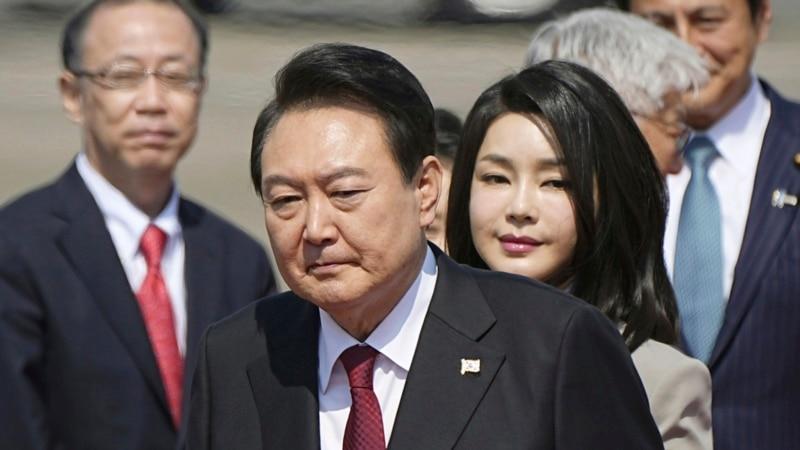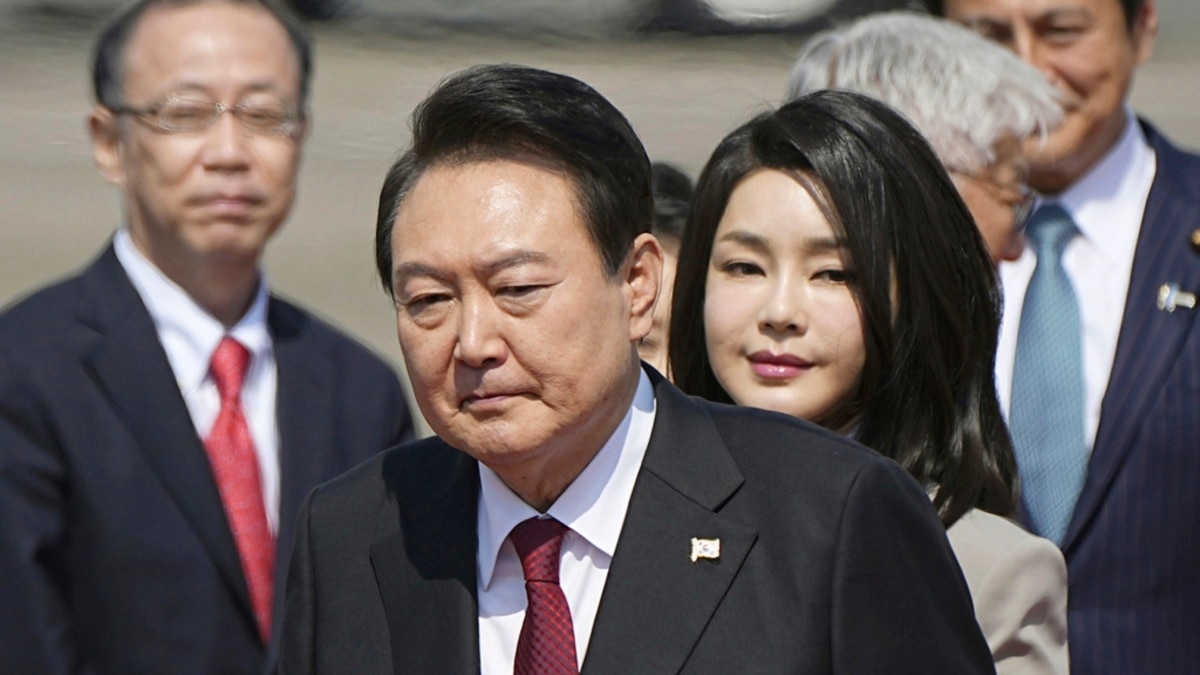

SEOUL, SOUTH KOREA —
South Korean President Yoon Seok Yeol has landed in Japan for a rare summit with his Japanese counterpart, hours after a North Korean long-range missile launch demonstrated the countries’ shared security concerns.
Yoon arrived Thursday afternoon in Tokyo, where he will hold a one-on-one meeting with Japanese Prime Minister Fumio Kishida.
Yoon’s visit to Japan is the first by a South Korean president for a bilateral visit in 12 years. The trip aims to improve ties that have been hampered by historical disputes related to Japan’s 1910-1945 occupation of the Korean peninsula.
Last week, Yoon unveiled a plan to resolve one of the key sticking points in the Japan-South Korea relationship – how to compensate South Korean victims who were conscripted into forced labor by Japan.
Under Yoon’s plan, the victims would be compensated through a public foundation funded by donations from South Korean companies, without the direct involvement of Japanese businesses.
The plan has been heavily criticized by South Korea’s opposition Democratic Party; multiple polls suggest about 60% of South Koreans oppose the proposal.
Yoon has defended the plan, saying South Korea and Japan need a more forward-focused relationship that deals with common challenges, such as China and North Korea.
In a reminder of shared threats, North Korea on Thursday launched an intercontinental ballistic missile that landed just 250 kilometers west of Japan’s Oshima Island in Hokkaido Prefecture, according to Japanese officials.
No damage was reported from the missile, which fell outside Japan’s exclusive economic zone, according to Japan’s defense ministry.
Japan’s Chief Cabinet Secretary Hirokazu Matsuno condemned the launch as a “barbaric act.”
“We will confirm close cooperation with South Korea and the United States towards North Korea’s complete denuclearization at the Japan-South Korea summit today,” he added.
In a statement, a White House National Security Council spokesperson said the United States “strongly condemns” the launch, which “needlessly raises tensions and risks destabilizing the security situation in the region.”
North Korea has not commented on the launch. It usually does not disclose details about its launches until the following morning in state media.
North Korea’s near-constant missile launches since early last year have served as a regular reminder of the threat posed by the nuclear-armed country.
In 2022, North Korea launched more than 90 missiles – by far the most it has ever fired in a single year. Some of the missiles flew close to South Korea and Japan, prompting shelter warnings and air raid alerts.
North Korea has conducted three rounds of launches this week. On Tuesday, North Korea reported firing two medium-range ballistic missiles; on Monday, it claimed a successful launch of two strategic cruise missiles from a submarine.
The North Korean launches also coincide with ongoing U.S.-South Korea military drills, which have been ramped up in response to North Korea’s increased weapons tests.
Sunday, state media said North Korean leader Kim Jong Un promised a powerful response to U.S.-South Korean “war provocations,” which he said were nearing a “red line.”
U.S. and South Korean officials insist their military drills are defensive in nature and necessary in order to maintain military readiness.
North Korea also defends its launches as legitimate acts of deterrence and self-defense. However, North Korea is prohibited from conducting any ballistic missile activity under a series of United Nations Security Council resolutions.
In a statement after Thursday’s launch, South Korea’s Joint Chiefs of Staff said Seoul and Washington would further solidify their combined defense posture “against any North Korean threats and provocations.”
South Korea’s President Yoon, meanwhile, said North Korea will “certainly pay” for what he called “reckless provocations,” noting that the latest launch demonstrated the need to reinforce security cooperation with the United States and Japan.